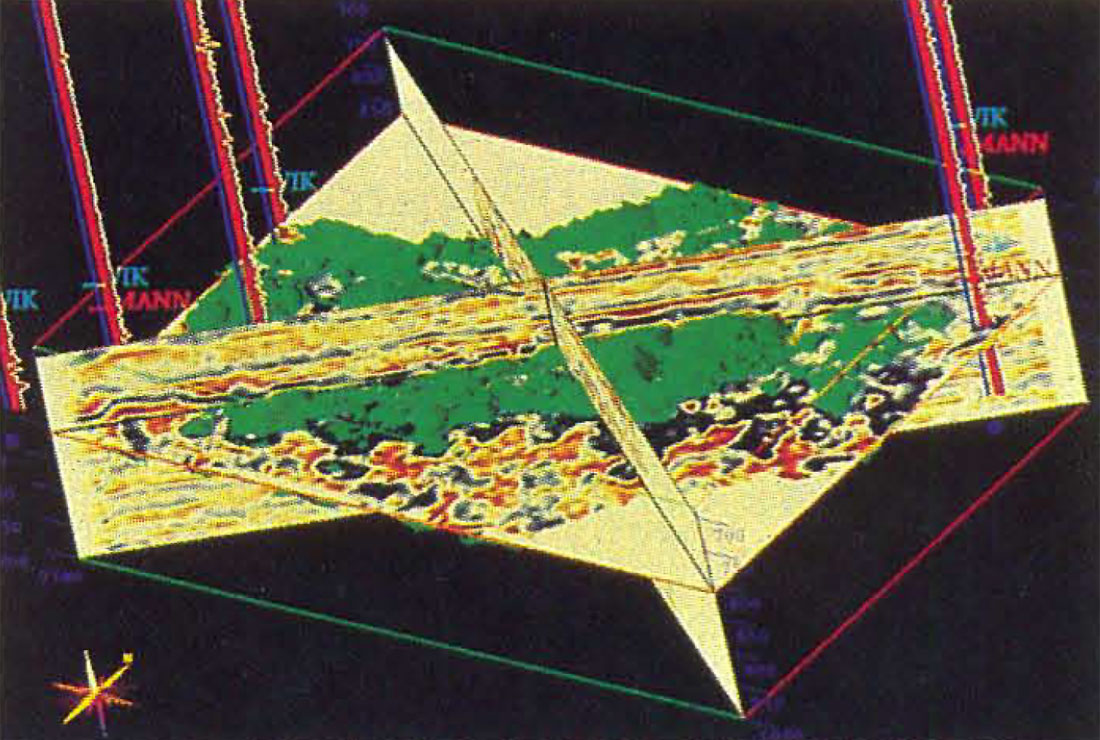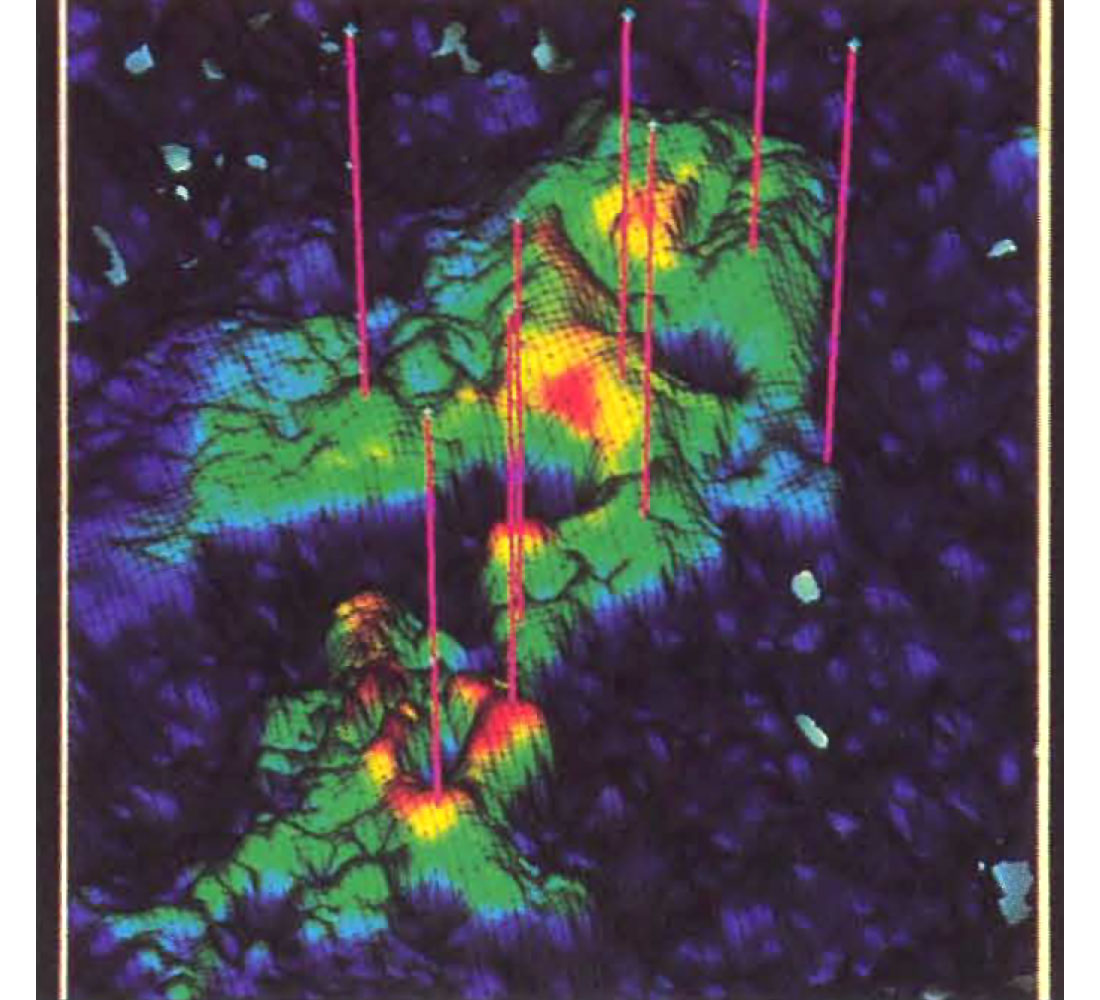Summary
A multidisciplinary asset team 1 with Amoco Canada's Oil Business Unit recently improved the quality of an exploitation program in a small oil field in Western Saskatchewan. The two month study utilized an integrated suite of Landmark applications for geology, geophysics, petrophysics, and reservoir engineering in a common work environment with three networked UNIX workstations, and the assistance of onsite workflow consultants 2 (Figure 1). The team prototyped a new integrated work process, reduced cycle time by an estimated 33%, averted at least one dry hole, and drilled six successful oil wells out of six attempts.

Introduction
Amoco Canada has been organized in multidisciplinary teams for years. But team members typically worked in separate offices and lacked computing technologies to link their individual efforts. What we needed was a means of working together to make quicker, more reliable interpretations to pick optimum drilling locations and increase revenues. Last year, the company investigated various ways of reducing cycle time and improving efficiency. We decided to conduct a pilot study using a common work environment and an integrated suite of software applications that share a common Oracle database. Our asset team, which is responsible for exploiting a small oil field in western Saskatchewan, was selected for the Landmark Integration Project (LIP). To facilitate the integrated process, we created a workroom with three networked workstations running a full suite of applications for project data management, 3D seismic interpretation and visualization, synthetic seismogram creation, velocity modeling, geological interpretation, petrophysical and reservoir attribute analysis, mapping, and 3D geocellular modeling. In addition, the LIP team contracted two technical consultants to help us completely redesign our workflow and learn the applications "on the job."
Integrated Work Process
In less than two months, the LIP team completed the first three phases of the project: Database Assembly, Reservoir Delineation, and Reservoir Characterization.
A fourth phase, dubbed "Interpretation While Drilling" or "IWD," took place in real time as new data came in during the drilling program.
Database Assembly. Data for the project consisted of a 3D seismic survey and well database of 47 wells (21 within the seismic area of interest), including headers, raw log curves, formation tops, cross sections, petrophysically derived curves, zone attributes, structure and isochore grids and pointsets, synthetics, time-depth tables, and production data.
Reservoir Delineation. In the second phase, the team's unified approach enabled us to delineate the primary reservoir container with greater accuracy than ever before. We interpreted four key surfaces and three geologic units: the reservoir sand, the underlying shale, and overlying carbonate, and residually corrected time and depth maps to tie well control. We then built the framework for a 3D geocellular model containing these surfaces and used 3D visualization techniques to study the structural complexities of the field (Figure 2).

Reservoir Characterization. In the third phase of the project, we populated each cell of the 3D model with over 50 rock and reservoir attributes. Zone attributes were derived from petrophysical and geological software, as well as historical production data. Up to 14 petrophysical curves were generated for each of the 21 wells within the 3D survey area. Total oil in place was calculated for each reservoir compartment. Then we picked prospective drilling locations and calculated net oil volumes within the 3D model (Figure 3). A variety of seismic attributes over the target interval were extracted and based on this analysis, two well locations identified in the geocellular model appeared too risky. Those locations were dropped, and replaced by two others with a higher chance of success.

Interpretation While Drilling. After completing the initial field study, the integrated working environment enabled the team to make fast, on-the-spot decisions during drilling with a level of confidence and accuracy we never had in the past. We dubbed the new process "Interpretation While Drilling" (IWD). It was particularly important because we were targeting thin oil zones between uneconomic gas and water. Working at the eastern edge of the Western Canada basin, targets were shallow enough to reach in a few days, so we did not release the rig between wells. Speed was vital. New sonic logs and other well data came in frequently, so we continually updated the velocity model and depth maps as quickly as possible.
Benefits of Integrated Workflow
At various points during the project, the team attempted to quantify the most significant benefits of the new integrated work process. One of the most obvious benefits was reduction of overall cycle time by an estimated 33 percent, based on a pure task-by-task comparison, before and after the project. Another, perhaps more important benefit was a dramatic decrease in time wasted on data manipulation - and a corresponding increase in time spent on higher value interpretation. By storing well and production data in a single Oracle repository, we estimate we cut data management from 70 percent of total project time to only 30 percent, boosting interpretation time from 30 to 70 percent. Having experienced workflow consultants onsite provided additional value. The consultants facilitated better overall project planning, conducted on-the-job software and database training, streamlined the team's existing work processes, and provided detailed documentation of the new integrated workflows. Working in an integrated environment meant team members spent a great deal of time in the same room, right next to each other. It helped our team become more cohesive, and each team member became familiar with the other disciplines' tools and techniques.
Business Results
All told, the team drilled six oil wells out of six attempts in the first phase of drilling. In one case, we modifying our risk assessment and drilling plans on the fly. We feel that our 100% success rate is a result of a higher quality interpretation, and our ability to "interpret while drilling". Our total reserves estimate from 3D modeling was confirmed post-drilling to be remarkably accurate. Finally, we maintained a very low finding and developing cost, even with the incremental cost of integration (software, hardware, consulting). Overall, we achieved results in cycle time; risk and productivity beyond even our own expectations.
Future Integration
The team's vision for future integration includes drilling, production, and reservoir engineering and business planning. Goals include reducing cycle time and increasing accuracy of wellbore planning by selecting formation targets and setting engineering parameters within the 3D earth model, and then updating the 3D model as quickly as possible while drilling. The team's production and reservoir engineers are eager to link their production analysis data directly into the 3D earth model to directly benefit from the initial field characterization, and to better manage the reservoir over time. The team's business planner would like to update his economic models on a real time basis by tapping into the project database online to capture reserve estimates, numbers of proposed wells, and current risk determinations. In essence, the impact of integration on the original LIP team has now extended into more engineering and planning disciplines, thus moving the integration path further downstream in the oil field life cycle.
Conclusion
With the success of the LIP project, from a technical, business and work process standpoint, the team is sharing a "best practice" within Amoco and industry. Asset teams today are under increasing pressure to get production online faster and boost revenues sooner than ever before. Having integrated technology can help them make smarter business decisions, even under that kind of pressure.
Acknowledgments
Team members: Darcy Cuthill, Bill Beaudoin, Werner Froehlich, Pat McCulloch
Consultants: Adam Shamban, Kandy Lukats, Landmark.
Reprinted with permission from Amoco Canada











Join the Conversation
Interested in starting, or contributing to a conversation about an article or issue of the RECORDER? Join our CSEG LinkedIn Group.
Share This Article